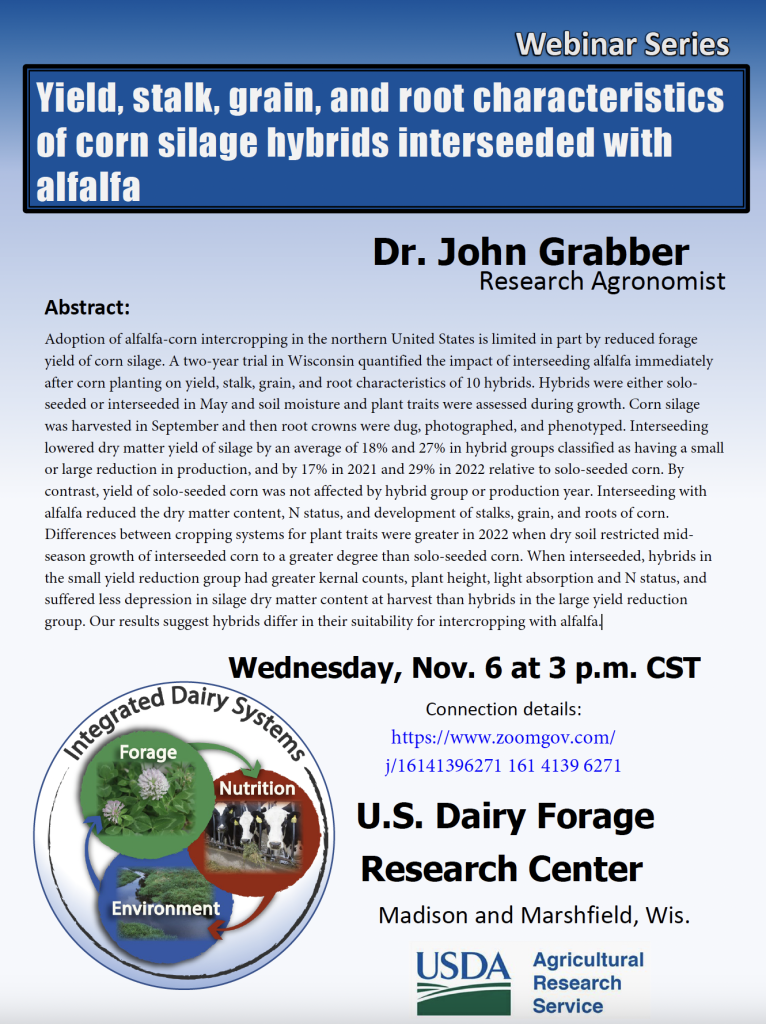U.S. Dairy Forage Research Center webinar: Yield, stalk, grain, and root characteristics of corn silage hybrids interseeded with alfalfa – Nov. 6
Yield, stalk, grain, and root characteristics of corn silage hybrids interseeded with alfalfa
John Grabber
Research Agronomist
Wednesday, Nov. 6, at 3:00 p.m. CST
Connection details:
https://www.zoomgov.com/j/16141396271
Abstract: Adoption of alfalfa-corn intercropping in the northern United States is limited in part by reduced forage yield of corn silage. A two-year trial in Wisconsin quantified the impact of interseeding alfalfa immediately after corn planting on yield, stalk, grain, and root characteristics of 10 hybrids. Hybrids were either solo-seeded or interseeded in May and soil moisture and plant traits were assessed during growth. Corn silage was harvested in September and then root crowns were dug, photographed, and phenotyped. Interseeding lowered dry matter yield of silage by an average of 18% and 27% in hybrid groups classified as having a small or large reduction in production, and by 17% in 2021 and 29% in 2022 relative to solo-seeded corn. By contrast, yield of solo-seeded corn was not affected by hybrid group or production year. Interseeding with alfalfa reduced the dry matter content, N status, and development of stalks, grain, and roots of corn. Differences between cropping systems for plant traits were greater in 2022 when dry soil restricted mid-season growth of interseeded corn to a greater degree than solo-seeded corn. When interseeded, hybrids in the small yield reduction group had greater kernal counts, plant height, light absorption and N status, and suffered less depression in silage dry matter content at harvest than hybrids in the large yield reduction group. Our results suggest hybrids differ in their suitability for intercropping with alfalfa.


